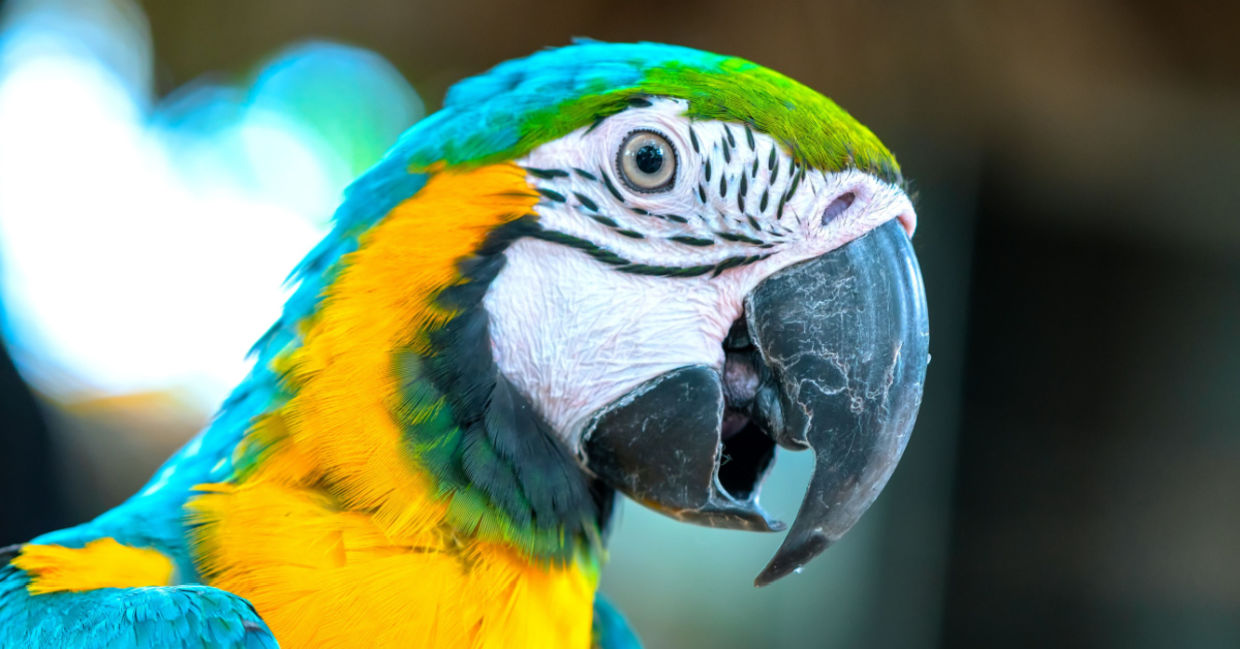
(Huy Thoai / Shutterstock.com)
Nestled within London’s tranquil parks and gardens, among the less flamboyant squirrels, blackbirds, sparrows, robins, and hedgehogs, flit loud, flashy, green parakeets. The Guardian reports that these extroverted and animated flyers hail from the tropics. Many are descended from escaped pet parrots, who managed to band together and set up colonies in London that now number in the tens of thousands.
View this post on Instagram
London isn’t the only city inundated by parrots. Parrots are smart and adaptable birds who’ve learned to thrive in all sorts of settings. Consequently, they’ve been able to establish colonies worldwide, setting up populations in Brooklyn, Barcelona, Rome, Chicago, Tel Aviv, Singapore, and hundreds of other major urban areas spanning the globe. What is the secret to their success and how are these colonies affecting the native populations?
Man’s best friend?
People have been intrigued by parrots’ colorful plumage and extroverted natures for thousands of years. Alexander the Great reportedly kept pet parrots that he brought from India,according to Scientific American. Parrots were also a common companion in ancient Rome. And, as the caricature of the peg-legged sailor accompanied by an erstwhile parrot on the shoulder suggests, humans have transported parrots across the seas to all parts of the globe.
Like so many other invasive species, people are directly responsible for parrots’ “avian invasions.” Although both Charles Darwin, and an article in the Journey of Zoology in 1885 reference non-native parrot colonies, the 1960’s was the era when parrot populations worldwide really began to multiply, spurred on by the burgeoning pet trade.
Even once it became clear that the birds were setting up invasive colonies, cityfolk were loath to take steps to prevent the inundation. Locals enjoyed the birds’ flashy colors and enchanting antics. The latest research suggests that up to 60 parrot species have colonies outside their native ranges.
View this post on Instagram
Parrots’ impact
The jury is still out on the impact of parrot colonization. ParrotNet, a project sponsored by the European Cooperation in Science and Technology, found that some parrots, like the Rose-rings, were directly competing with native species for nesting space, and some parrots even attack and kill native avian competitors. Additionally, parrots feed on crops, and can harm agriculture.
In response to these concerts, the Convention on International Trade in Endangered Species of Wild Fauna and Flora, a global treaty regulating the exotic animal trade, has a number of parrots on its banned list.
ParrotNet also suggests taking action to remove or decrease the parrot population. But, these efforts have been stymied by local bird-lovers and by the parrots’ persistence and adaptability “They're animals that are really social, and they live in cognitively complex social environments,” Grace Smith-Vidaurre, a postdoctoral fellow at the Rockefeller University and the University of Cincinnati, tells the Guardian. “They're like humans in a lot of ways.”
Adaptable avians
Parrots have innovated a number of strategies that let them flourish in environments outside their native ranges, according to Scientific American. For example, Monk Parakeets in Northern Hemisphere colonies changed their breeding season to deal with the colder temperatures. They also build multi-chambered, insulated nests that keep them warm and toasty even in New York City’s frigid winters.
View this post on Instagram
Many parrots have made themselves at home in urban environments, learning to forage for food in garbage bins and build nests on wires and in tree cavities. Lucy Aplin, a bird expert at the Max Planck Institute of Animal Behavior, tells Scientific American about the Sydney, Australia-based Sulphur-crested Cockatoos who’ve learned to open garage cans, and have taught other Cockatoos in their network to do the same as well. “Parrots have the potential, if given the opportunity, to exhibit rapid adaptation to anthropogenic change,” Aplin explains.
Species arks
Some of these city cockatoos are severely endangered in their native environments. Take the Yellow-crested Cockatoo, for example. This white cockatoo, with its distinctive, golden, feather crown is critically endangered in its native Indonesia, but has established large and thriving colonies in Hong Kong, where it lives peacefully among the island’s native species. Astrid Alex Andersoon, a postdoctoral researcher at the University of Hong Kong says, “It's possible that these populations, if you do small things to support them in cities, can function as species arks—backup populations for the wild ones.”
Smith-Vidaurre wonders the same thing. However, she notes that urban colonies of parrots display different vocal signatures than their native cousins. She wonders whether introducing these parrots back to their native ranges would even be feasible.
When it comes to global biodiversity the spread of parrots is a mixed bag. In some areas, they directly compete with local species, and sometimes even with the human population (as agricultural pests). In other regions, they coexist well with the local flora and fauna, while enchanting and entertaining local humans with their gregarious and intelligent personalities. Not to mention that their very presence in Istanbul, Miami, and Rio de Janeiro is a testament to their resiliency and adaptability.
For better or worse, it looks like city-livers worldwide will continue to be able to enjoy these beautiful birds both as pets in their homes, and as neighbors.
YOU MIGHT ALSO LIKE:
Does Your Pet Parrot Spend Too Much Time Alone?
Cheeky Parrot Captures a “Bird’s-Eye View” of Nature
'Operation Noah’s Ark' Helps Hundreds of Parrots







